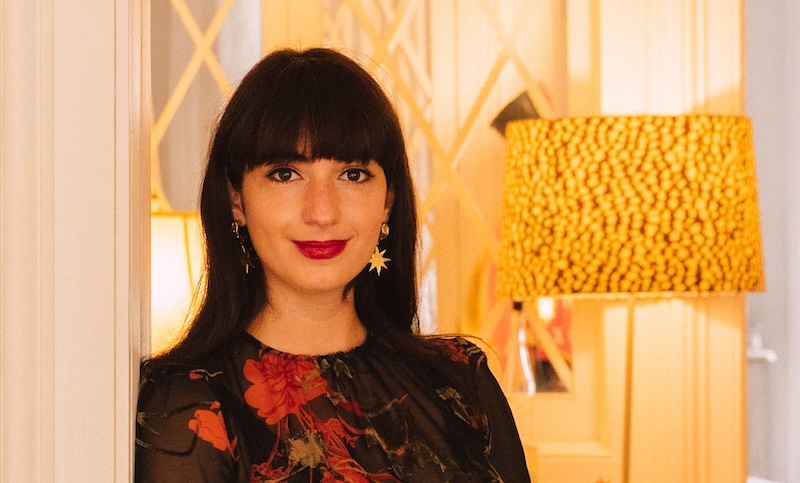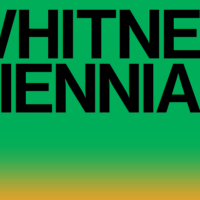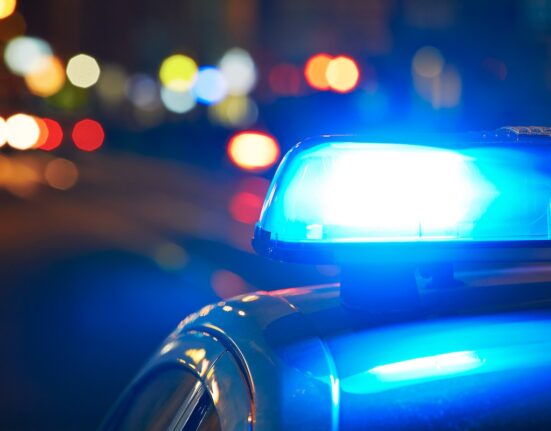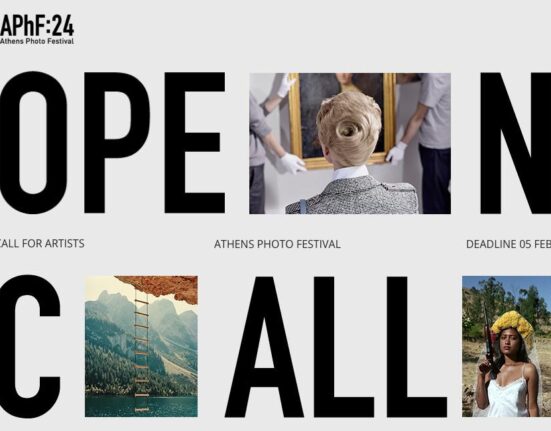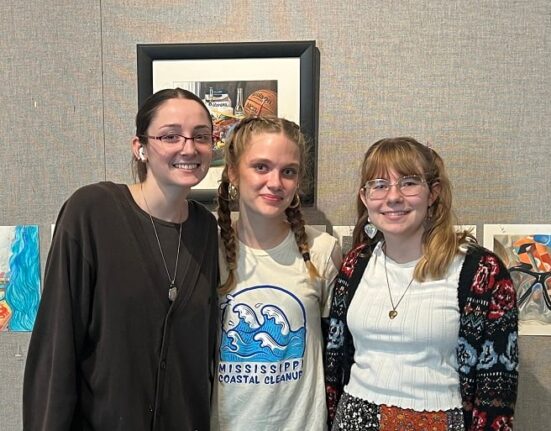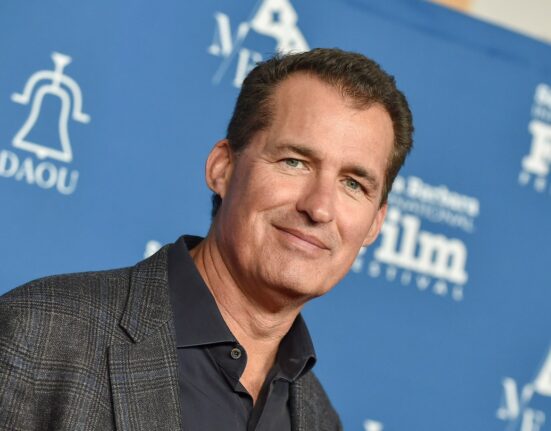Visual artist Andie Dinkin discusses finding solace in your process, being motivated by your creative community, and following your own vision.
I wanted to start out by asking you a bit about how you came to painting.
I have always been drawing. I always found comfort, having a pen or pencil in my hand. I remember I would always wake up early when I had sleepovers, and I’d be the first one up, and I’d go and draw. I think I would get nervous on sleepovers when I was little, so it would be something I could do that would just clear my head and allow me to escape into a different world, my own world. I saw it as a solace or something.
Growing up, do you remember it as mostly a solitary activity, or was there a communal aspect to it? Did you take classes?
No, it was pretty solitary, and I still do work alone in my apartment. But at RISD, I saw the communal aspect of it, and I really enjoyed that and feeding off of each other. I found that was very integral in my art career, so I have been thinking about getting a studio here that would be with other artists too.
Transitioning from mostly working alone to going to RISD, to then working alone again, was that mentally something you had to prepare for?
It changed the way I worked when I got to RISD, but before that, I would do art in my art class, so it actually became kind of communal later on. It was when I started doing classes, like a figure drawing class, and I had an art class in my high school. When I got to RISD, I felt like everyone was weird like me. I fit in there really well, and it was the first time I felt a sense of being home, and that was really nice. It’s been, actually, more of a change for me to work alone. I started doing that during COVID, and I haven’t stopped, but it is nice to have control over my environment. When you work in a studio, you can’t control what other people are going to do.
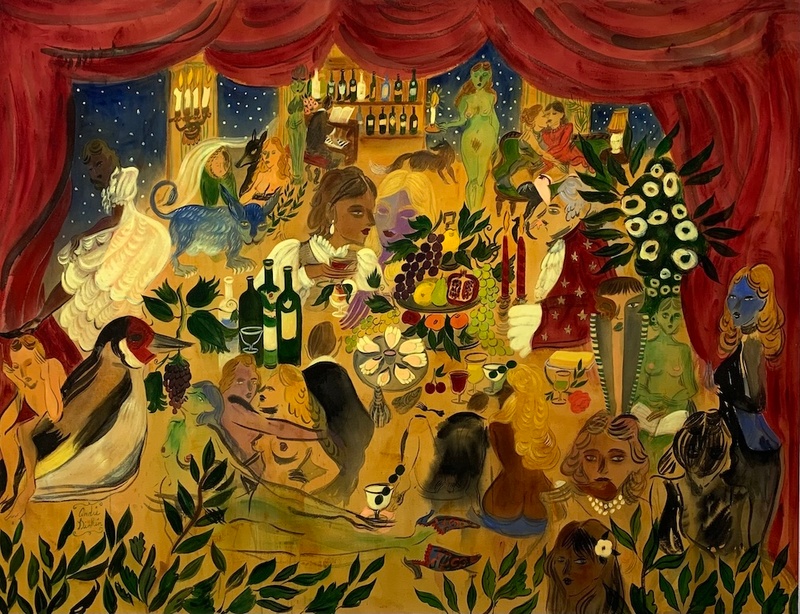
Ghosts at Marie Antoinette’s Puppet Show
You have such a distinct style. How has it evolved to where it is now?
I did illustration at RISD. I thought drawing was a major, but I realized it wasn’t, so the reason I did illustrations was because they provided extra figure drawing. I learned the body, and I felt that was pretty important for me to just, aesthetically and traditionally, learn how to draw a body. But then I think that illustration at RISD they were like, “Oh. You’re not following the assignment, so let’s throw this away.”
I was like, “Does it matter if you’re following the assignment? This is what I came up with,” and I think I’ve been pushing that further and further. I’ve always liked to create a world. They don’t need to make sense. Space or time doesn’t need to make sense, and I like to paint weird creatures, ghosts, people having sex, or just sort of all aspects of life. I do like to push the boundaries, and I want to keep pushing the boundaries more.
That’s what really struck me when I first stumbled upon your work—you could spend so long just looking at one painting. I was wondering if you could talk about past and present inspirations, and how you made them work while being in an institution, where you have a certain set of expectations or rules. How did you reconcile doing what you want, versus what is expected of you?
I did a solo show in Half Gallery’s Annex Space called Beatrice’s Puppet Show. Beatrice is my angry devil art lady who lives inside me. My husband really doesn’t like her. She’s really intense and does not want to be interrupted. She really comes out of me, especially when I’m doing work for a solo show, where I have to work so many hours. I feel everyone has monsters inside of them that they try to hide and, instead, this is my monster. I’m just displaying it for maybe myself or maybe the audience, but it’s interesting, to me, to put your demons out on the table.
My father passed away a year-and-a-half ago, so my mom and I, we talk about little signs from him. I’ve been just kind of like, “What is our relationship with those who’ve died, and where do they go?” I’ve been really fascinated with that, and I don’t know if it’s coming out yet in my art, but I am just sort of fascinated by the mysteries of life that we can’t see, that are probably there. I think that goes back to being interested in the imagined worlds, and so it’s kind of just all coming together, and I don’t really think about the rules or sometimes I don’t even know what the rules are. If I’m drawn to paint something, I will just do it and try not to second guess myself. Just allow myself to sit and paint what I am feeling, I guess.
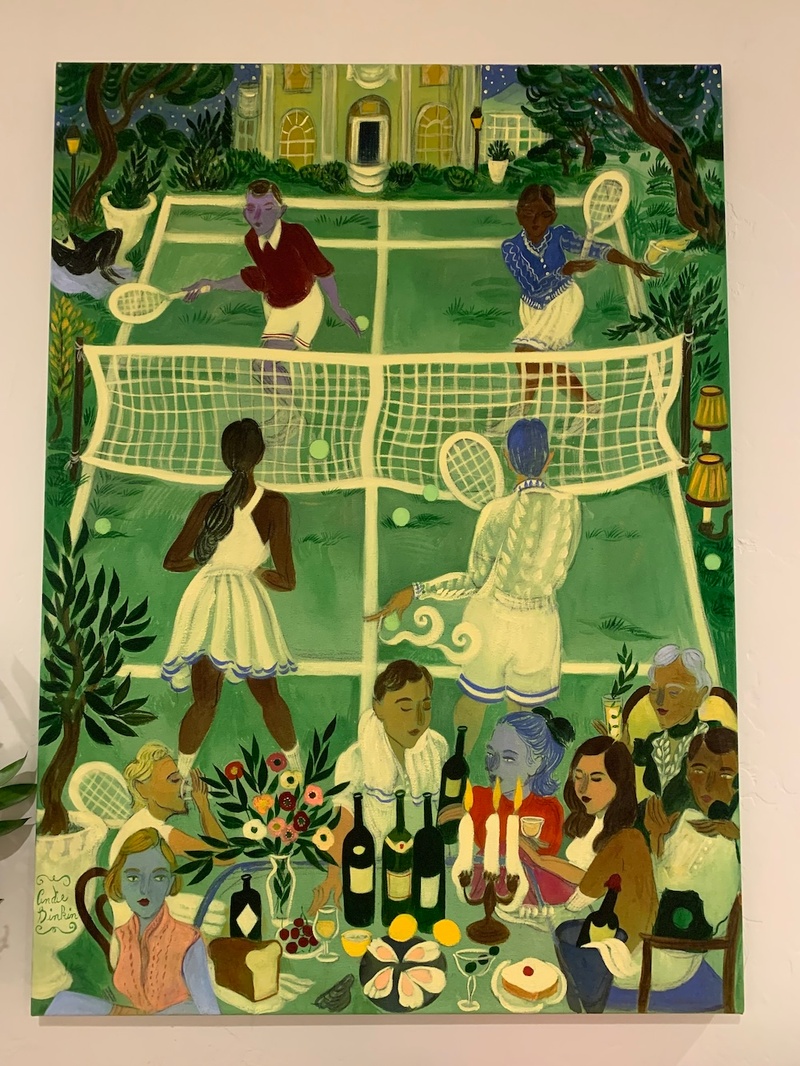
Midnight Doubles
What is your relationship to social media like? Do you have any self-preservation tactics while using it?
It’s really hard to be an artist. It’s hard to be vulnerable. Posting is vulnerable, especially right now with everything going on. I try to think about it like how I paint, because I’m like, “Okay. I’m going to do this,” and then if it comes to me, I’m just like, “Okay. I’m going to post this.” I just don’t go deeper into it, because it’s just too much. Sometimes I’ll second guess myself and be like, “Well, should I have not done that?” But then I’m just like, “Whatever. It’s fine.”
I understand working as an illustrator, and I kind of primarily worked [this way] after I graduated, so somebody would be like, “Oh. I have this living room, and can you paint something for that? I like this style of yours.” I’ve recently started to get really bored of that, and been wanting to do just my own stuff. I’m breaking away from what other people want me to do. I mean, those are just clients, but I am breaking away from what those people want me to do and just focusing on just painting.
This is very much part of what we observe on social media, but I feel like you have a pretty consistent output. I’m wondering if breaks are part of your routine or your practice, and what those look like for you?
I don’t really take breaks. I wish I was a little bit more willing. I don’t know if it’s because RISD really built this guilt inside of me at least, that if I’m not working, that’s bad, but I don’t really agree with that, because I think that you get a lot from breaks. I think artists do get a lot from breaks. I went to Santa Barbara with my mom on Monday, and I don’t even have any deadlines, but I just feel this pull, like I need to be painting today, and I like to start working at a certain time. I like to paint all day. I mean, during that time, I would take a nap or something. It’s not like I’m painting all day, but if I’m not in my studio, I get anxious. But I am going to Japan for two weeks soon, so that will be a break. I get a lot of inspiration on the trips and stuff, so I think it’ll be good. I would encourage myself and other artists to take breaks if they wanted to.
You mentioned you’ve done a few shows lately, and I was wondering what that experience is like for you, especially when you’re physically in the gallery presenting your work and seeing people’s reactions to it.
I like watching people look at my work, and see them pointing out little things that I put in, that sometimes I really question. It’s fun. A lot of the basic things, I put in a cat or a dog, people, I see them kind of pointing at them. I did a mural in a restaurant here too, called Gigi’s, and I like to go and stare at people while looking at things. It feels very self-involved, honestly, when I do that, but it still feels good.
Is there a time or a place when you feel most creative?
I feel more creative around other artists, and I push myself more. I’m going to start thinking about getting a studio. Some days, I’ll just wake up and I have an idea, or if I’m on a trip, something will click, which hasn’t happened in a couple of weeks. But something random—there was this bar I went to, I went with my sister, and I can’t remember the name of it, but there’s a banjo person. There was a little band, and it felt like a 1920s bar and I got an idea, and so little things will just spark it. I think seeing people does give me a break that gives me energy to practice.
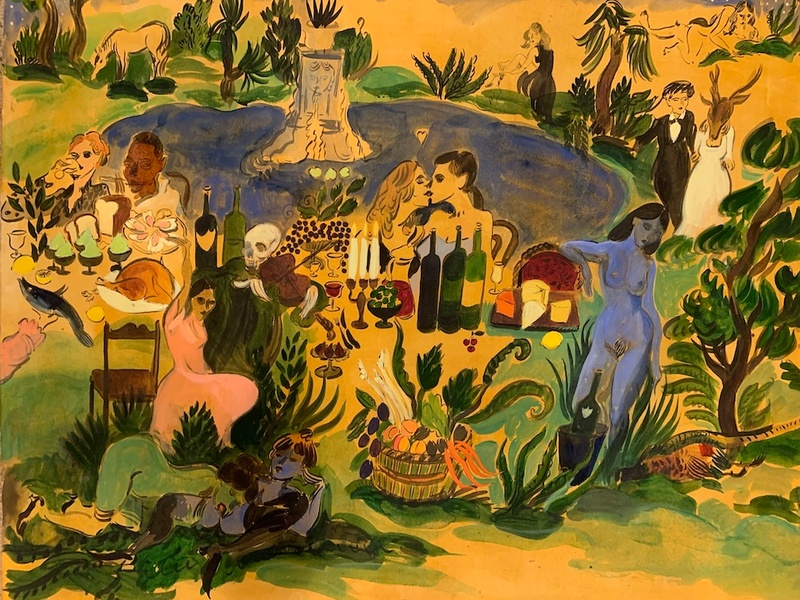
Summer Nights By the Pond
Is there a way you measure your success now?
I try not to think about it, because if I compare myself to any of my friends, I’m like, “Oh. Should I be doing better?” But then I will stop myself, because I just try to think like, “This is where I am, and I should just be happy with it.” If I think about it too long, then I’m either disappointed, or I never want to get full of myself.
I feel like that’s a through line—just not overthinking it.
I think so. I just started having these shows. I’ve not really worked with other galleries, and it’s really scary, but really nice to put a body of work together, and I’m excited to keep doing that. I was confused before, I think, about which path to take if I should stick to commissions. I was doing other little projects too, with architects, deciding if I should do that, or if I should go down this gallery road and make my own art. When my dad passed away, he told me, “You need to start just making your own art, because you see the world really beautifully.” It’s just stuck with me, and I feel like yesterday I was about to do this mural, and yesterday they emailed me, and they’re like, “We no longer can do this,” and it was definitely going to be a good amount of my income. I was just like, “Maybe this is just a sign that I need to just focus on my own path.”
Andie Dinkin Recommends:
Getz/Gilberto Album, Edith Piaf
Materials I cannot live without: Micron Pens, Liquitex Clear Gesso, Holbein Acrylic Gouache, specifically Cream Yellow, General’s Charcoal Pencil 6B
Books: Florine Stettheimer Painting Poetry, Salvador Dali’s Les Diners De Gala, Leonora Carrington’s Surrealism Alchemy & Art
Modo Hot Yoga LA, I go almost everyday, which helps heal my back from hunching while I paint and draw, and helps my general daily anxiousness.
Bob Baker’s Marionette Theater: Love the playfulness of the puppets and the big red drapes. It was a big inspiration for my last show with Half Gallery, Beatrice’s Puppet Show.

